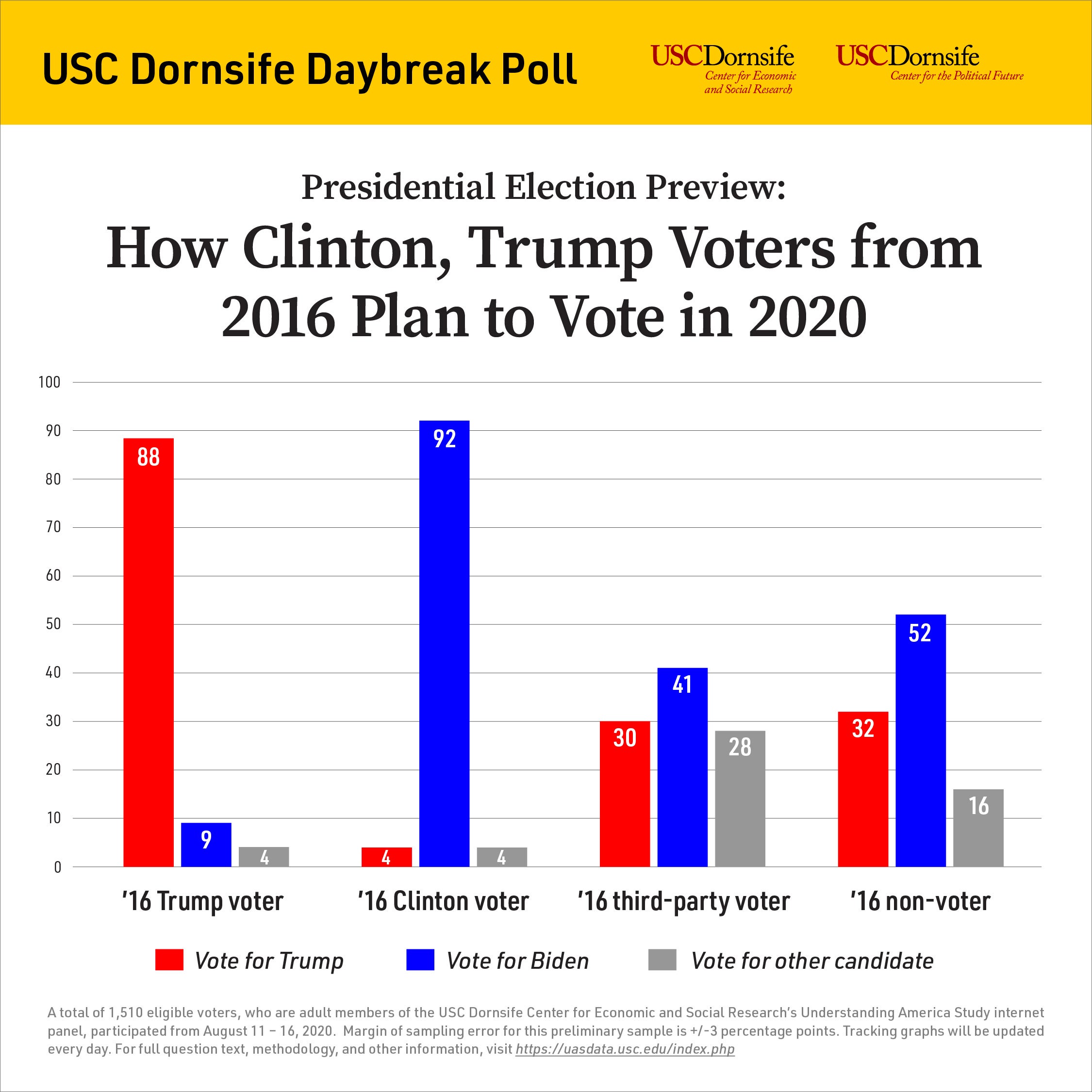
USC Dornsife launches 2020 election tracking poll; Biden leads by 11 points
Two centers at the USC Dornsife College of Letters, Arts and Sciences have launched a daily nationwide poll to track Americans’ opinions about the presidential candidates.
USC researchers will base election forecasts on an updated version of methods used in their groundbreaking 2016 election poll, which tracked crucial inflection points in the election by following the same individuals over time.
Data from the 2016 USC poll suggested late-breaking support among certain groups that contributed to Donald Trump’s surprise win in the electoral college.
“Our 2016 Daybreak Poll was the USC debut of experimental polling methods pioneered by our team at Rand in 2012,” said Jill Darling, survey director of the 2020 Daybreak Poll, which is conducted by the USC Dornsife Center for Economic and Social Research (CESR).
“We adjusted our model for the 2018 election and had great success predicting the congressional outcome. This election cycle, we’ll be using that model, and two additional methodologies, to track voter support for presidential candidates. We are also asking voters which party’s candidate they’ll vote for in congressional races.”
Results are based on repeated participation of eligible voters in CESR’s Understanding America Study, which is a probability-based representative sample of U.S. households. The researchers expect that more than 6,000 voters from their panel will respond to the poll every two weeks, with shifts in the data reflecting changing opinions.
Three methods of estimating how America plans to vote
The poll is partially funded by the National Science Foundation through a collaboration between USC, the Santa Fe Institute and the Massachusetts Institute of Technology, led at USC by Wändi Bruine de Bruin, who is Provost Professor of Public Policy, Psychology and Behavioral Science at the USC Price School of Public Policy and USC Dornsife.
The partnership also includes the USC Dornsife Center for the Political Future, led by two of the nation’s most experienced political experts representing both sides of the political divide, Robert Shrum and Michael Murphy.
“This is the election of a lifetime,” said Shrum, center director and Carmen H. and Louis Warschaw Chair in Practical Politics. “By polling thousands of people and polling every night, our tracking will give us a real-time read on the shifting direction of the presidential and congressional races.”
“Tracking data allows us not only to see what has been happening in the presidential race but also what might be coming next,” said Murphy, co-director of the center.
The 2020 version of the USC Dornsife Daybreak Poll will use three ways of estimating how America plans to vote in the November election:
- The probability-based method used in 2016 and again in 2018.
- Asking participants how they expect people in their social circles and state will vote.
- Asking respondents whom they would vote for if the election were held today. This question includes third-party candidates for the Green and Libertarian parties, and the option of saying that they remain undecided.
First look at Daybreak Poll results
Because the panel of participants in the USC Dornsife tracking poll includes many who participated in the 2016 poll, researchers are able to compare their vote for president in 2016 to the candidate they’re supporting in 2020.
Early results based on preliminary data, using the probability-based method, show:
- Biden holds an 11-point lead over Trump in the national popular vote.
- 88% of voters who backed Trump in 2016 support him today, while 92% of Hillary Clinton’s 2016 voters support Biden.
- Biden has an 11-percentage-point edge among voters who backed third-party candidates in 2016, and a 20 percentage point edge among those who did not cast a vote four years ago because they were too young, prevented from voting or just chose not to vote that year.
A detailed methodology, topline results, and links to stories and graphics will be available on CESR’s 2020 Election page and the Center for Political Future’s USC Dornsife Poll site.
Learn more about the 2020 Daybreak Poll in a Q&A with Survey Director Jill Darling >>
